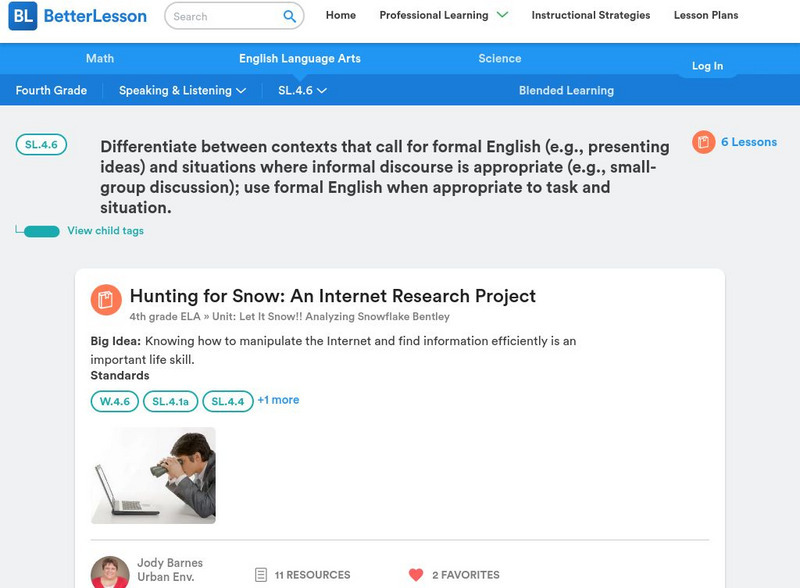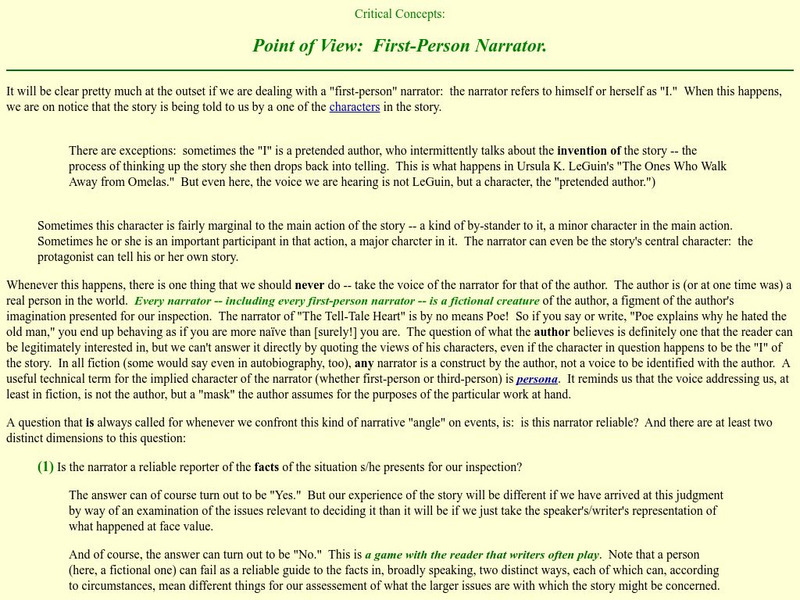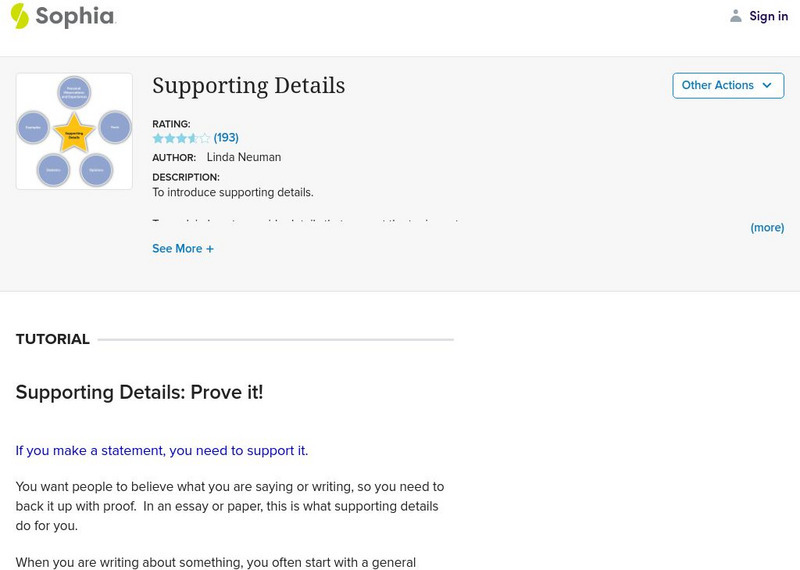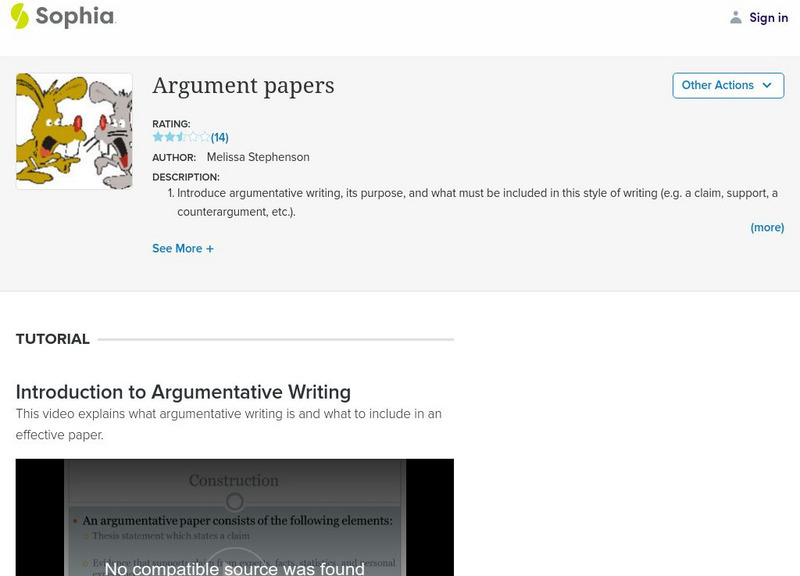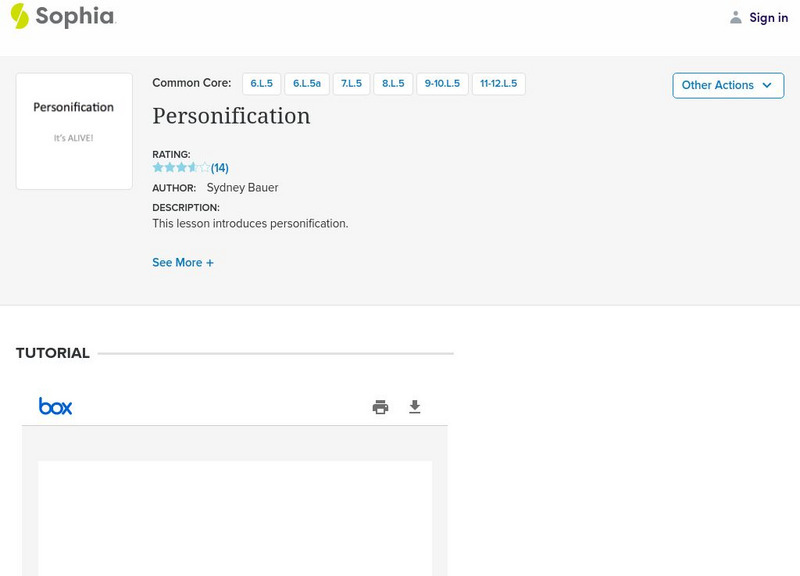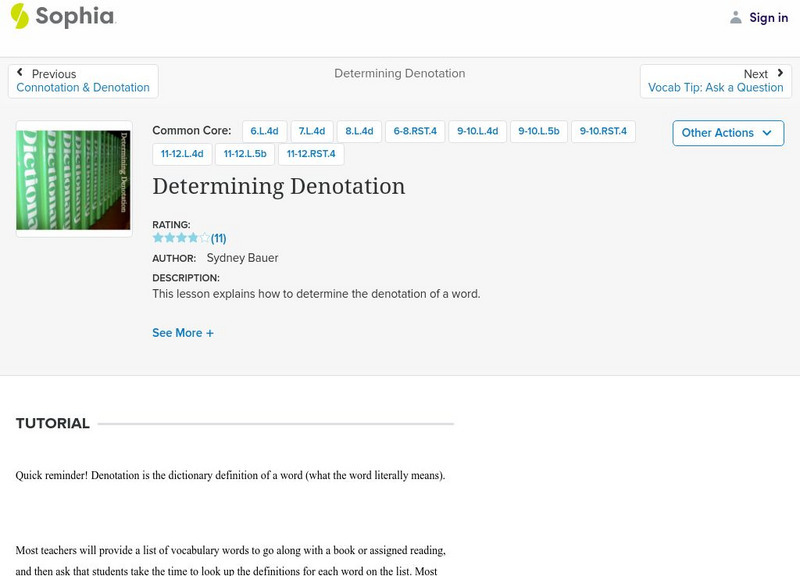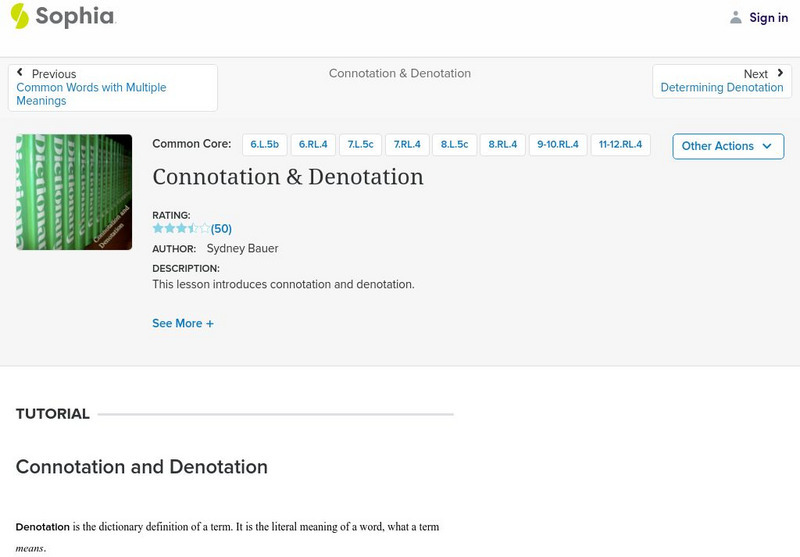Other
Tesol: Helping Students Understand That Written and Spoken English Are Different
This in-depth article analyzes how teachers can effectively teach students that written language does not always correspond to spoken language. Sample lesson ideas are included. SL.9-10.6 Adapt to task/formal. CCSS.ELA-Literacy.CCRA.L.1,...
Other
Santa Monica College: Words Commonly Confused
This site contains a list of commonly confused words with practice activities to help in learning how to use them correctly.
Big Learners
Biglearners.com: ccss.ela literacy.l.1.6 : First Grade English Language Arts
Here is a collection of our common core aligned worksheets for core standard L.1.6. A brief description of the worksheets is on each of the worksheet widgets. Click on the images to view, download, or print them. All worksheets are free...
BBC
Bbc Bitesize: Speaking and Listening: Standard English
Explains what standard English is and when it is used, the difference between formal and informal language, and non-standard forms of English such as those found in dialects.
Better Lesson
Better Lesson: Sl.4.6: Differentiate Between Formal and Informal English Contexts
Links to 6 lessons and activities that build student skills in standard SL.4.6: Differentiate between contexts that call for formal English (e.g., presenting ideas) and situations where informal discourse is appropriate (e.g., small...
Other
Ksu: Point of View: First Person Narrator
This tutorial surveys the uses and limitations of first-person narration in literature. CCSS.ELA-Literacy.CCRA.R.9
Sophia Learning
Sophia: Supporting Details
This tutorial focuses on supporting details using a video of a paragraph from a book showing the topic sentence and two strong, reliable, supporting details. This is followed by a slideshow that stresses the need for variety in the types...
Sophia Learning
Sophia: Argument Papers
A series of six screencast lessons explaining the process of argumentative writing. The first [4 min. 22 sec.] focuses on overall structure and purpose. The second [6 mins, 18 secs] explains how to state a claim. The third [6 min. 3...
McGraw Hill
Mc Graw Hill: Conventions of Standard English: Avoiding Vague Pronoun References
Read about vague pronoun references then click the practice button to practice what you've learned.
English Club
English Club: Spelling Rules
This EnglishClub tutorial provides rules for spelling words. Spellings related to using -ei-, -ie-, -ible, -able, -er, -est, -ed, -ing, -ly, and -s are featured. These are followed by a link to a large set of spelling quizzes.
Merriam-Webster
Merriam Webster: Visual Dictionary Online
Picture dictionary with 6,000 pictures that illustrate American English words organized around different themes, such as astronomy, clothing, transporation, and sports. With access to a vocabulary-esque game of the week. [Has wraparound...
AdLit
Ad lit.org: Some Obstacles to Vocabulary Development
A strong vocabulary, both written and spoken, requires more than a dictionary. In fact, it requires an educational commitment to overcoming four obstacles: the size of the task (the number of words students need to learn is exceedingly...
Other
Spelling It Right: Learn How to Spell Confidently
Free help with spelling from an experienced English teacher! Worksheets, advice, and help are available. The worksheets are each a complete lesson on a specific spelling skill. L.9-10.2c Spelling, L.11-12.2b Spelling
Texas Education Agency
Texas Gateway: Analyze Controlling Idea or Thesis, Purpose, and Textual Elements
Analyze the controlling idea and the specific purpose of the text, identifying the textual elements that support that purpose including the most important details. RI.9-10.2 central idea/summary [Unarchived version is accessible by TX...
Sophia Learning
Sophia: Comparing and Contrasting Texts
Two PowerPoint presentations and a video [2:57] on comparing and contrasting literary and informational texts as well as how to write a literary analysis. Includes links to external resources.
Sophia Learning
Sophia: Personification
Seven slides introducing and providing examples of personification. Slides also explain the purpose and impact of personification within a text, and examples come from "Rappaccini's Daughter" by Nathaniel Hawthorne.
Sophia Learning
Sophia: Transition Words
A variety of presentation formats including notes, a PowerPoint presentation, exercises, a game, and a video [1:46] explaining transition words and their function as well as providing examples of transition words to be used for specific...
Sophia Learning
Sophia: Determining Denotation
This lesson explains how to determine the denotation of words; it defines denotation and offers a plan of action: look up the word in the dictionary, read all meanings paying attention to parts of speech, and compare each of these...
BBC
Bbc Bitesize Revision: Some Purposes of Reading
As part of a review and close reading section of BBC Bitesize, this site presents an overview of various purposes of reading, including a five-bullet point explanation of reading purposes. Click the Next button for more information.
Sophia Learning
Sophia: Connotation and Denotation
This lesson discusses connotation and denotation; it defines each and provides examples showing how words can have very similar denotations but very different connotations. This information is offered in text and audio.



